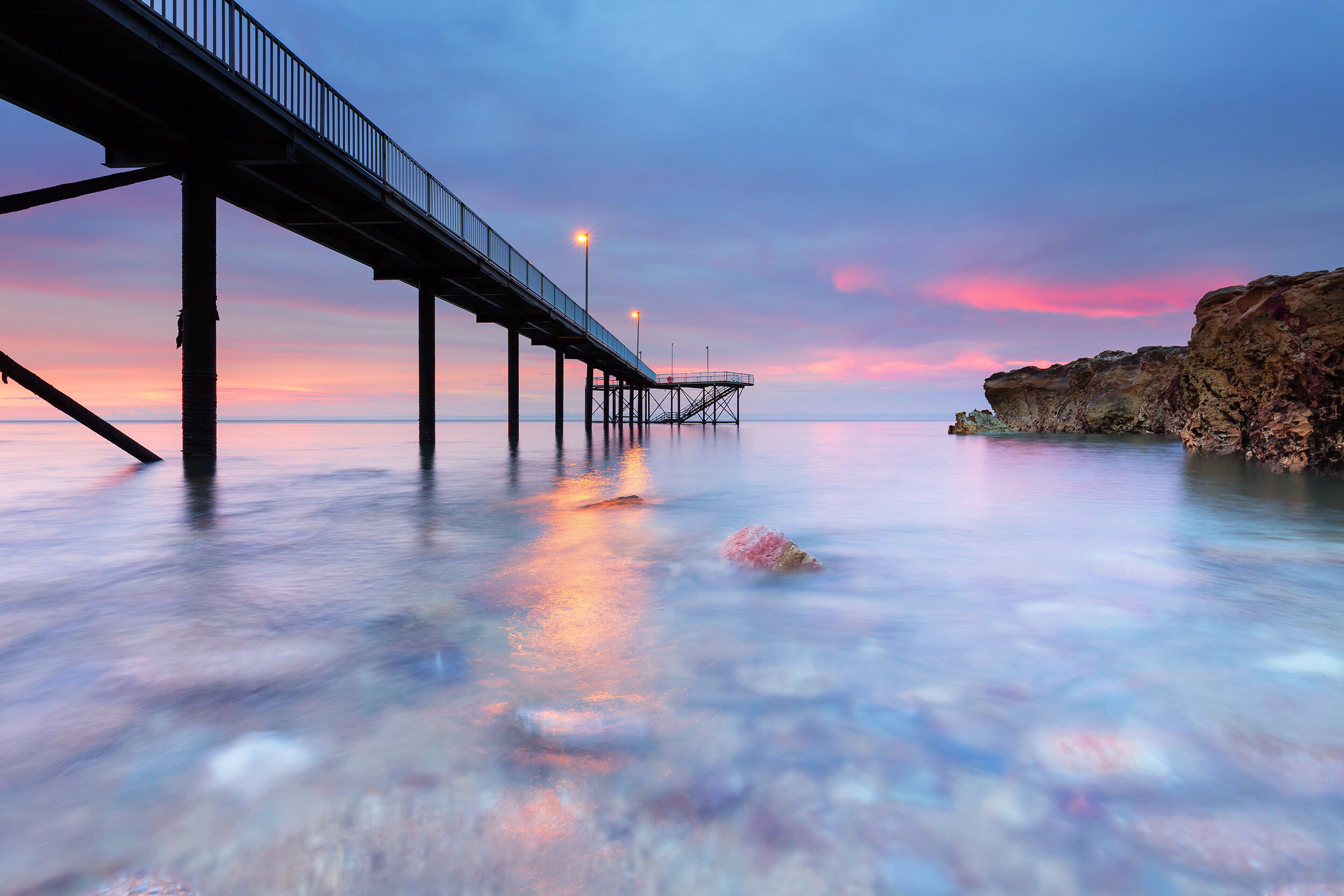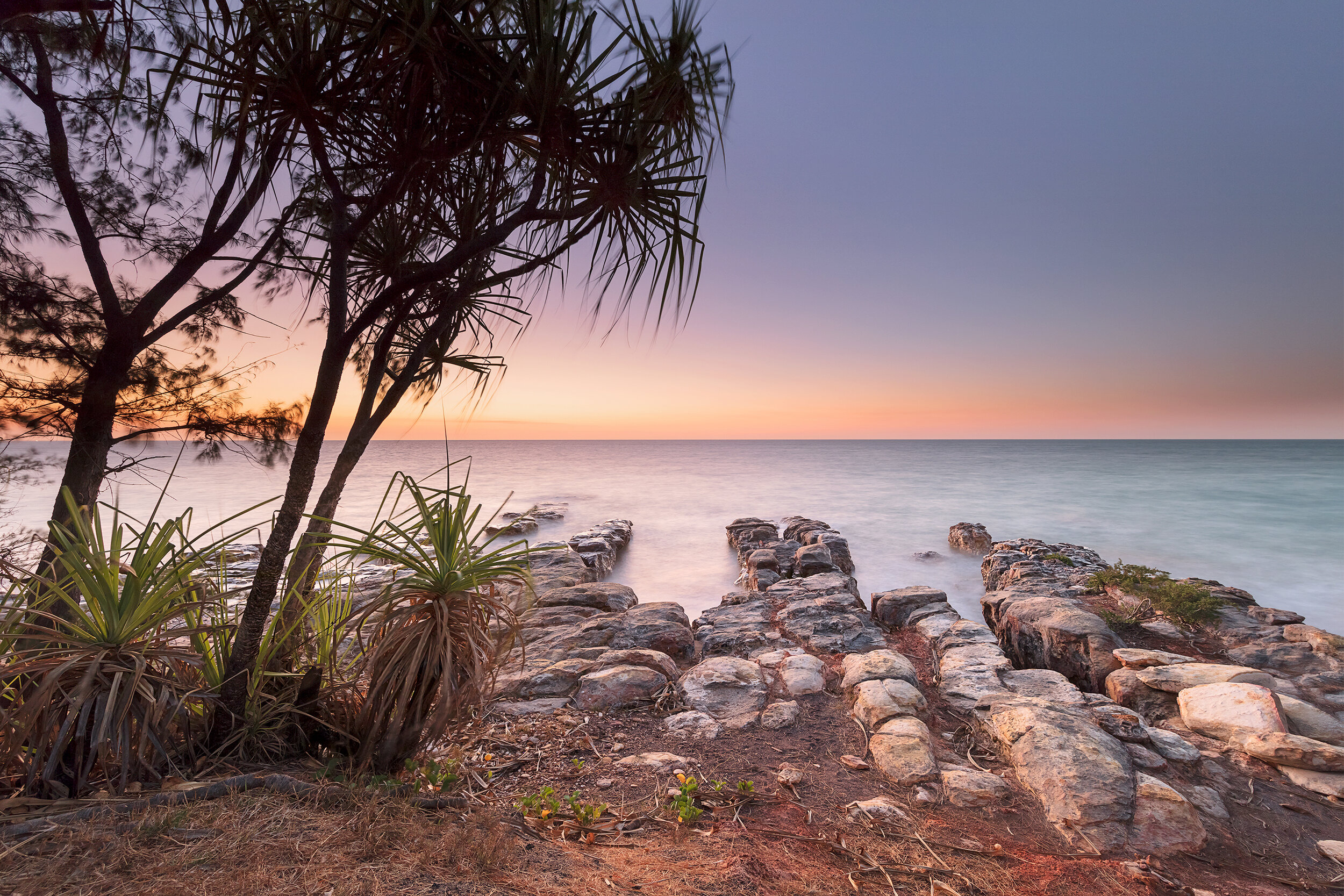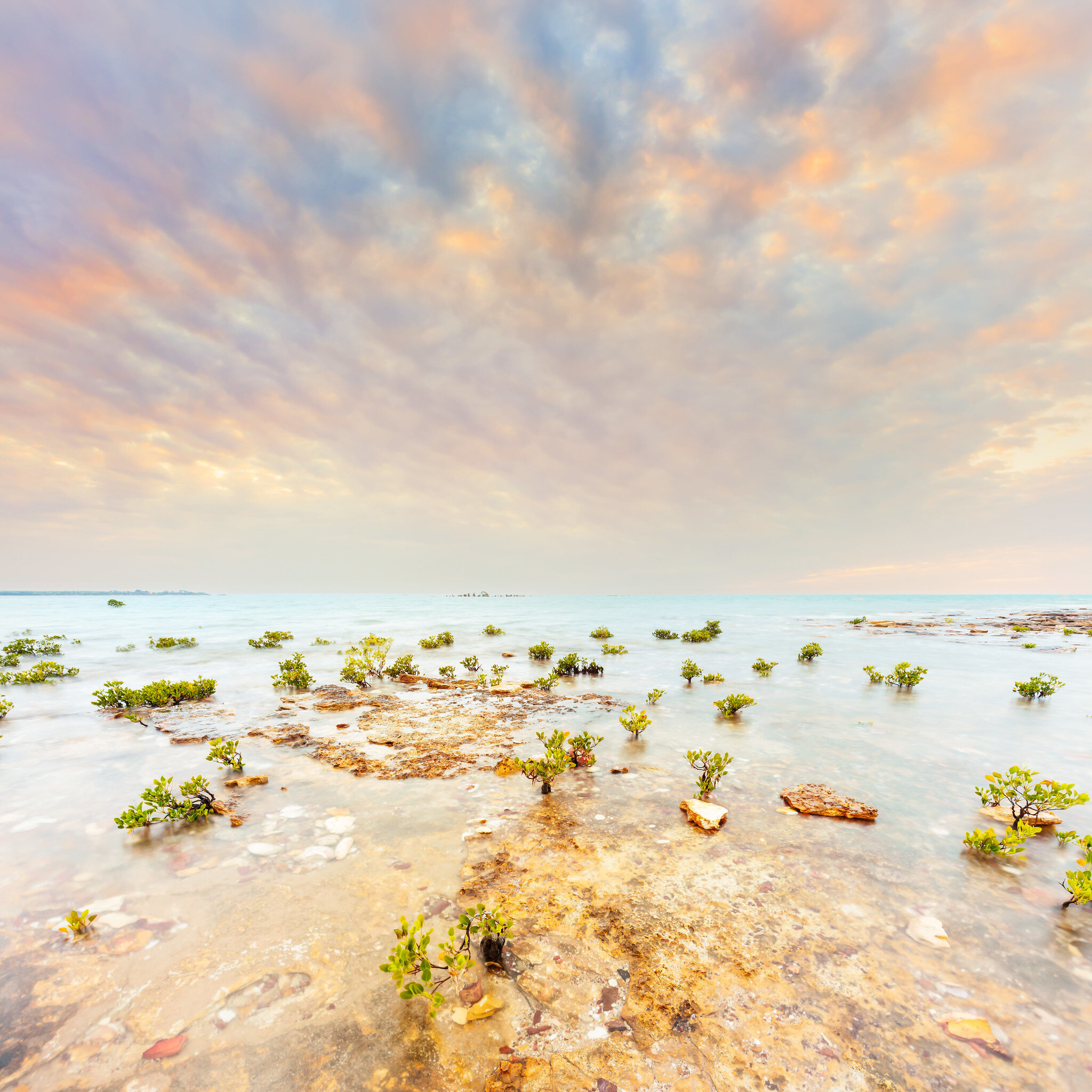TIPS | Where to photograph and when - Nightcliff Foreshore, Darwin
I love photography (duh), and I love sharing information, experiences and images with other people.
Over the years, lots of other photographers have found my previous blog “Darwin Seascape Guide - where to go and when” - I’ve received messages, people have told me in person at my various selling pop up locations, and sometimes I’ve even seen other photographers out at location at the same time I’ve been there, all because they found my little ol’ blog post from 2014!!
It makes me happy that I’ve helped other photographers find the locations to get their own great shots! Darwin is not an area typically known for it’s great seascape photography - and I think it takes a bit of training and thinking outside of the box, to get beautiful seascape images from our area. Pick the wrong locations at the wrong tides and the beaches are ugly looking mud! Hopefully these blog posts will give some ideas on what you can shoot in the area but also give you the exact directions to find the same locations.
See the original blog post here
I think it’s about time I wrote an updated post! Although obviously the locations in the 2014 post are still there, I have a new set of my “go to” locations, there are new images to share and new “findings” to pass on.
My original post is much more generalised, an overview of lots of different locations. I’m going to write a series of updated posts which are a bit more indepth.
To kick off this new series of posts, it’s only right that I start with one of my favourite coastal regions of Darwin, for photography: Nightcliff Foreshore.
Nightcliff Jetty
Although I have covered Nightcliff Jetty before, it’s one of the most photographed places in Darwin so it’s only right that I share it again. I’ve also learnt a lot more about the location since 2014 - my shooting style has changed, I look for different things, sources of inspiration change regularly.
TIME: Sunrise or sunset.
I actually prefer sunrise, these days. There are much fewer people around. Sunset at Nightcliff Jetty gets really busy these days, with food vans, picnickers and exercisers. Sunrise sees much fewer people. The light is not so direct, but sometimes that’s good. I have a more pastel, softer image style anyway, so it suits me. Sunset can be good at a lower tide, as you can then walk underneath to escape the crowds.
Find below some examples of images from the location - indicating sunrise or sunset, time of year and tide levels.
Capture details: Canon 5DSr, 11-24mm f4 L lens @ 11mm. f/16, ISO 100, 0.3 sec
Sunrise, May, approx 3.9m incoming tide
Capture details: Canon 5DSr, 11-24mm f4 L lens @ 11mm. f/13, ISO 200, 25 sec
Sunrise (with no sun!), early April, approx 4.5m tide
I think this also shows that sometimes you don’t need great light to create an image. So many times I’ve seen that flat light and not even bothered to get my camera out. But sometimes it pays off! I think the colour contrast between the blue water and yellow rocks just works.
Capture details: Canon 5DSr, 16-35mm f4 L lens @ 20mm. Lee 0.9 graduated neutral density filter, 9 images stitched together (a nightmare with the lines and texture of the jetty). ISO 100, f/16, 1.3 sec
Sunrise, late Oct, tide ??? but it’s irrelevant anyway. The only thing I would suggest is a lower tide or a calmer water as this jetty is extremely wobbly and shooting slow shutter speeds on it is a nightmare.
The same with people walking on the jetty - the thing wobbles terribly whenever anyone is walking on it, so I would definitely only attempt this type of shot at sunrise.
Capture details: Canon 5DSr, 11-24mm f4 L lens @ 13mm. f/16, ISO 100, 1/6th
Sunrise (well, just after), February, approx 5m incoming tide
Capture details: Canon 5DSr, 16-35mm f4 L lens @ 16mm, 0.9 Lee GND filter, ISO 200, f/10, 2 sec
Sunrise (around 30 minutes after sunrise), February, 7.1m tide
2. Nightcliff Finger Rocks
The “finger rocks” are also included in my earlier blog, but again they are one of the most popular locations for photographers of Darwin. It’s also a great location for both sunrise and sunset, as there are a heap of interesting rock formations there - the rock colours are sublime with the right light.
TIME: sunrise or sunset
Capture details: Canon 5DSr, 11-24mm at @ 11mm. ISO 100, f/13, 10 sec
Sunrise, February, 7.5m tide (watch out for blowholes and spray if the water is a bit choppy!)
Capture details: Canon 5DSr, 11-24mm f4 L @ 11mm, ISO 100, f/13, 1/4
Sunset, March, 5.9m tide
Capture details: Canon 5DSr, 11-24mm @ 14mm, ISO 200, f/9, 13 sec
Sunset, August, 6.9m tide
Capture details: Canon 5DSr, 11-24mm f4 L @ 11mm, ISO 100, f/16, 0.5 sec
Sunrise, July, 7.5m tide
Captured just to the right/east of the dropped pin #2 on the map.
3. Red-patterned rocks
These are some of my favourite rocks, but they are very tide specific! There’s only a really small cluster of these rocks, and they are right at a high high tide mark - I’m talking a minimum of 7m tide.
They also are not in the best position for “good light” - the sun goes down behind a rock formation to the west, and the sun comes up behind the land to the east. As such, this is really a wet season location - when the skies are a lot more interesting, with more clouds and more chance of good light and colour creating a whole vibrant atmosphere where ever you are!
If you’re not sure on where exactly the sun will rise and set, a great app that I use is called the Photographer’s Ephemeris - you can drop a pin and it will display the trajectory for the sunrise and set (and moonrise/set and heaps of other useful info too). It also accounts for the seasonal variation and changes slightly throughout the year.
The easiest access point is from the first ramp if you were heading from the jetty. However, the second ramp will get you there too if you walk back on yourself a little.
TIME: So far I have found I prefer the results at sunrise, with the light behind the photographer!
Capture details: Canon 5DSr, 11-24mm f4 L @ 11mm, ISO 100, f/14, 10 sec
Sunrise, April, 6.9m tide
Capture details: Canon 5D Mark III, 16-35mm f4 L @ 16mm, Lee 0.9 GND filter. ISO 100, f/20, 2 sec
Sunset, August, 7.2m tide
4. Mangroves
This whole area between the jetty and Progress Drive are a great spot for shooting mangroves - there are lots of nooks and crannies to explore, but just be careful to watch for the tides and the muddy rocks… I’ve fallen over in this area more than once!
My best tip for this spot if you’re planning on walking out a little way (say, any tide less than 5m), is to plan to shoot at an outgoing tide. The land here is so flat, with so many rock pools, that it’s easy to not notice the tide quickly moving in around you, if it’s coming in. I’ve been caught out a couple of times, been nipped by small crabs here, nearly stood on a stingray and yes…. was shooting about 15 metres away from a small saltwater crocodile - in true Territory style! This is the only place I’ve ever had a close croc enounter. I didn’t realise it was there - a small crowd had gathered on the small cliffs behind me (I wondered why), everyone was yelling but being so close to waves crashing I couldn’t hear what they were saying. People then started doing hand/arm motions of a crocodile’s mouth, and pointing, and I eventually realised what was happening! It was only small, lying on rocks around 10-15m away, but let that be a warning to wading in the shallows.
There are heaps of different tides that work here - I do love a really high tide 6.6m plus, to get the mini, bonsai style mangroves in a bit of water. I prefer to keep the tide level above 4.5m, just because the walk out to the water is really long and slippery - which isn’t fun in the dark if you’re out for sunrise or sunset.
Here’s some of my favourites from the last few years. If you need more exact location pin points, get in touch, I’m happy to narrow down the exact spots for you.
TIME: Sunset
Capture details: Canon 5DSr, 11-24mm f4 L @ 11mm, ISO 100, f/10, 1/10th
Sunset, February, 7.2m tide
These mangroves are the closest to the jetty. Right at the high tide mark where the rocks meet the thin strip of sand.
Capture details: Canon 5D Mark III, 16-35mmmm f4 L @ 16mm, Lee 0.9 GND filter. ISO 100, f/14, 1.6 sec
Sunset, September, 6.8m tide
Same location as above, but a lower tide.
Capture details: Canon 5DSr, 11-24mm f4 L @ 11mm, ISO 100, f/13, 1/4
Sunset, May, 4.3m outgoing tide
Access this location right on the corner of Casuarina Drive, between Kurrajong Crescent and Kiranou Place
I hope this summary of some of my favourite Nightcliff locations helps you (whether you be local looking for more inspiration and shoot ideas, or a visitor unsure on where to go). Feel free to get in touch if you have any questions.
















